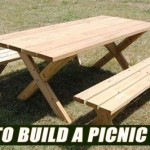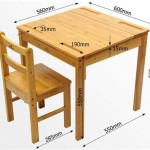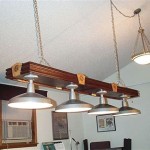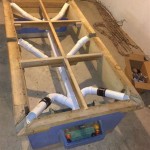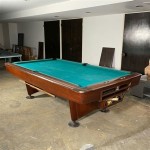Understanding the Benefits and Varieties of Glass Tabletops
Glass tabletops offer a versatile and aesthetically pleasing solution for protecting existing furniture surfaces or creating entirely new tables. Their transparency allows underlying designs to remain visible, while the glass provides a durable and easily cleaned surface. Options range from simple protective overlays to intricate custom designs, making glass tabletops suitable for a wide variety of applications and interior decor styles. Selecting the correct type of glass, thickness, and edge treatment is crucial for ensuring both safety and desired aesthetic qualities.
The use of glass in furniture dates back centuries, but its application as a tabletop became more widespread with advancements in glass manufacturing techniques. Modern glass production allows for larger, stronger, and more uniform sheets of glass, making them ideal for use as tabletops. The inherent qualities of glass, such as its non-porous nature and resistance to staining, have further contributed to its popularity in both residential and commercial settings.
Key Point 1: Advantages of Using Glass Tabletops
One of the primary advantages of glass tabletops is their ease of maintenance. The smooth, non-porous surface prevents liquids and spills from penetrating, making cleaning a simple process. A damp cloth and mild cleaner are typically sufficient to remove most stains and smudges. This ease of cleaning is particularly beneficial in dining areas or spaces where spills are common. Unlike wood or other porous materials, glass does not readily absorb odors or harbor bacteria, contributing to a more hygienic environment.
Beyond practicality, glass tabletops offer significant aesthetic benefits. Their transparency can enhance the visual appeal of a room by allowing light to pass through, creating a brighter and more open feel. This transparency also allows the base of the table, whether it's a handcrafted wooden structure or a modern metal design, to remain visible. Glass tabletops are available in various tints and finishes, allowing for customization to match specific design preferences. For example, tinted glass can add warmth or coolness to a room, while frosted glass can provide a degree of privacy or reduce glare.
Durability is another key advantage. While often perceived as fragile, glass used in tabletops, especially tempered glass, is remarkably strong and resistant to impact. Tempered glass is treated with heat, which makes it significantly more resistant to breakage than standard annealed glass. If tempered glass does break, it shatters into small, relatively harmless pieces, reducing the risk of serious injury. Even non-tempered glass can provide adequate protection for underlying surfaces, preventing scratches, dents, and other damage.
Furthermore, glass is a sustainable material. It is fully recyclable and can be reused without losing its quality or integrity. This makes glass tabletops an environmentally friendly choice compared to materials that are more difficult to recycle or that require significant processing to produce. The longevity of glass tabletops also contributes to their sustainability, as they are less likely to need replacement compared to other types of table surfaces.
Key Point 2: Types of Glass Used for Tabletops
The type of glass used for a tabletop significantly impacts its strength, appearance, and safety. Several types of glass are commonly used, each with its own unique properties and suitability for different applications.
Annealed glass, also known as standard glass, is the most basic type of glass. It is relatively inexpensive but also the least strong. When annealed glass breaks, it shatters into large, sharp shards, posing a significant safety hazard. Therefore, annealed glass is generally not recommended for tabletops, especially in areas where there is a risk of impact or breakage. It is sometimes used for purely decorative purposes or as a protective overlay on existing tables, but with careful consideration of the potential risks.
Tempered glass is a significantly stronger and safer option. It is produced by heating annealed glass to a high temperature and then rapidly cooling it. This process creates a compressive stress on the surface of the glass, making it much more resistant to impact and breakage. Tempered glass is approximately four to five times stronger than annealed glass. Critically, when tempered glass breaks, it shatters into small, relatively harmless pieces, reducing the risk of serious injury. This makes tempered glass the preferred choice for tabletops in homes, offices, and public spaces where safety is a priority.
Laminated glass consists of two or more layers of glass bonded together with a plastic interlayer, typically polyvinyl butyral (PVB). This interlayer holds the glass fragments together if the glass breaks, preventing it from shattering and falling out. Laminated glass is extremely strong and offers excellent safety and security. It is often used in applications where there is a high risk of impact or breakage, such as security windows or skylights. While more expensive than tempered glass, laminated glass provides an added layer of protection and can also offer soundproofing benefits.
Low-iron glass, also known as extra-clear glass, is manufactured with a reduced iron content. This results in a glass that is significantly clearer and more transparent than standard glass, which often has a slight green tint due to the presence of iron. Low-iron glass is ideal for applications where clarity and color neutrality are important, such as displaying artwork or showcasing a decorative base. It allows the true colors of objects placed on or beneath the glass to be seen without distortion.
Textured glass adds visual interest and can also provide a degree of privacy. Various textures can be applied to the surface of the glass, creating patterns, designs, or a frosted effect. Textured glass is often used in decorative applications or in areas where a degree of obscurity is desired. It can also help to diffuse light, reducing glare and creating a softer ambiance.
Key Point 3: Factors to Consider When Choosing a Glass Tabletop
Selecting the appropriate glass tabletop requires careful consideration of several factors, including the intended use, the size and shape of the table, the desired aesthetic, and the budget.
The intended use of the table is a primary consideration. For dining tables or coffee tables that will be subjected to frequent use and potential spills, a durable and easy-to-clean glass, such as tempered glass, is recommended. For purely decorative tables or display cases, a thinner or less expensive glass may be sufficient. In areas where safety is a concern, such as homes with young children or public spaces, tempered or laminated glass is essential.
The size and shape of the table will also influence the choice of glass. Larger tables require thicker glass to ensure adequate support and prevent sagging. The shape of the table can also affect the cutting and fabrication process. Custom shapes, such as ovals or curves, may require specialized cutting techniques and may be more expensive to produce. It is important to provide accurate measurements and specifications to the glass manufacturer to ensure a proper fit.
The edge treatment of the glass is another important consideration. Several edge treatments are available, each offering a different aesthetic and level of safety. A seamed edge is the most basic and least expensive option. It involves simply grinding the sharp edges of the glass to remove any burrs or imperfections. A flat polished edge provides a clean, modern look with a smooth, flat surface. A beveled edge adds a decorative touch with an angled cut that creates a subtle sparkle. A pencil polished edge has a rounded shape that is both aesthetically pleasing and comfortable to the touch. The choice of edge treatment will depend on the overall style of the table and the desired level of refinement.
The thickness of the glass is crucial for ensuring its strength and stability. Thicker glass is generally more durable and less prone to breakage, especially for larger tables. A general guideline is to use thicker glass for tables with larger surface areas or for tables that will be subjected to heavy use. Consult with a glass professional to determine the appropriate thickness for the specific application. Generally, tables under 36 inches in diameter or length can use 1/4" glass, while larger tables commonly use 3/8" or 1/2" glass. Extremely large or heavy-duty tabletops may even require glass that is 3/4" or thicker.
Budget is always a factor in any purchasing decision. The cost of a glass tabletop will depend on the type of glass, the thickness, the size, the shape, and the edge treatment. Tempered glass and laminated glass are typically more expensive than annealed glass. Custom shapes and edge treatments will also add to the cost. It is important to obtain quotes from multiple glass manufacturers to compare prices and ensure that the selected option meets both the budget and the performance requirements.
Finally, consider the support structure beneath the glass. The base of the table must be sturdy and stable enough to support the weight of the glass. For tables with a single pedestal base, a thicker glass may be necessary to prevent wobbling or tilting. For tables with multiple legs or a solid base, a thinner glass may be sufficient. Ensure that the base is properly sized and positioned to provide adequate support across the entire surface of the glass.

A Guide To Glass Table Tops Surface Protectors Abc Processing

Glass Table Tops Tables Direct

Glass Table Top Fab And Mirror

What Is The Best Type Of Glass For Table Tops West

Glass Table Tops Protectors Order Glasstops

Glass Table Top Fab And Mirror

Glass Table Tops A Complete Guide

Round Table Glass Cut To Size

Rainbow Glass And Mirror

Glass Table Top Fab And Mirror



